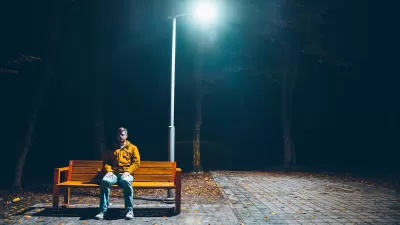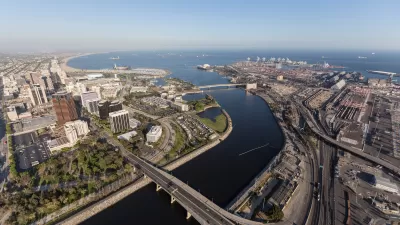Canadian Urban designer Ken Greenberg and American planner Trent Lethco argue that investing in cycling infrastructure improves driving conditions -- for those times that you really need a car.
Greenberg and Lethco point out that continual efforts to increase capacity for cars has only resulted in more congestion. The solution, they suggest, is to treat all modes as complementary and not mutually exclusive: most of us are, at various times, pedestrians, cyclists, transit users and car drivers. Ironically, the more we invest in non-auto infrastructure, the better the driving conditions become:
"Every additional trip we take on foot, on a bicycle or by public transit frees up significant space for drivers, since the 'footprints' of these other modes are so much smaller. The cyclist beside you is not the car in front of you; the bicycle locked to a ring at curbside means one less parking space is taken. Driver, cyclist and pedestrian are complementary rather than mutually exclusive categories. Most of us are all of these at different times. What's crucial is the proportion of time we use each mode, and creating communities where the car is needed for only certain types of trips. For other trips, we can make more efficient choices.
If we decide we want our system to be more efficient, we must...ensure it has the attributes that make the more efficient choices the attractive ones – and that comes through land use, system design, pricing and skillful urban design."
FULL STORY: Drivers, want more space on the roads? Push for bike lanes

Alabama: Trump Terminates Settlements for Black Communities Harmed By Raw Sewage
Trump deemed the landmark civil rights agreement “illegal DEI and environmental justice policy.”

Study: Maui’s Plan to Convert Vacation Rentals to Long-Term Housing Could Cause Nearly $1 Billion Economic Loss
The plan would reduce visitor accommodation by 25% resulting in 1,900 jobs lost.

Planetizen Federal Action Tracker
A weekly monitor of how Trump’s orders and actions are impacting planners and planning in America.

Waymo Gets Permission to Map SF’s Market Street
If allowed to operate on the traffic-restricted street, Waymo’s autonomous taxis would have a leg up over ride-hailing competitors — and counter the city’s efforts to grow bike and pedestrian on the thoroughfare.

Parklet Symposium Highlights the Success of Shared Spaces
Parklets got a boost during the Covid-19 pandemic, when the concept was translated to outdoor dining programs that offered restaurants a lifeline during the shutdown.

Federal Homelessness Agency Places Entire Staff on Leave
The U.S. Interagency Council on Homelessness is the only federal agency dedicated to preventing and ending homelessness.
Urban Design for Planners 1: Software Tools
This six-course series explores essential urban design concepts using open source software and equips planners with the tools they need to participate fully in the urban design process.
Planning for Universal Design
Learn the tools for implementing Universal Design in planning regulations.
Caltrans
Smith Gee Studio
Institute for Housing and Urban Development Studies (IHS)
City of Grandview
Harvard GSD Executive Education
Toledo-Lucas County Plan Commissions
Salt Lake City
NYU Wagner Graduate School of Public Service





























